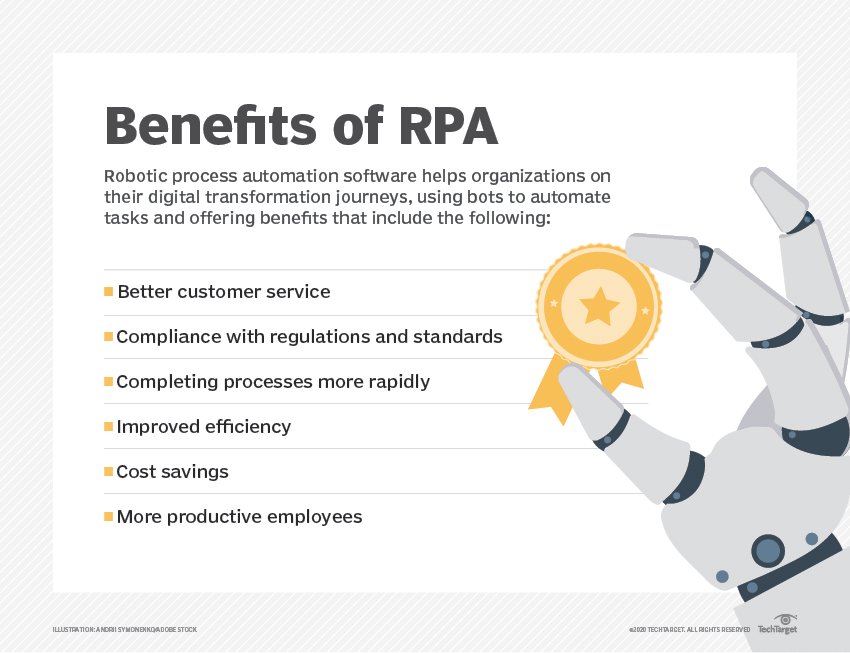- What is Robotic Process Automation?
Robotic Process Automation is the technology that allows anyone today to configure computer software, or a “robot” to emulate and integrate the actions of a human interacting within digital systems to execute a business process. RPA robots
https://www.uipath.com/rpa/robotic-process-automation
- What is robotic process automation?
RPA is an application of technology, governed by business logic and structured inputs, aimed at automating business processes. Using RPA tools, a company can configure software, or a “robot,” to capture and interpret applications for processing a transaction, manipulating data, triggering responses and communicating with other digital systems.
https://www.cio.com/article/3236451/what-is-rpa-robotic-process-automation-explained.html
Robotic Process Automation: What is RPA?
- Robotic process automation (or RPA) is an emerging form of business process automation technology based on the notion of metaphorical software robots or artificial intelligence (AI) workers
In traditional workflow automation tools, a software developer produces a list of actions to automate a task and interface to the back-end system using internal application programming interfaces (APIs) or dedicated scripting language. In contrast, RPA systems develop the action list by watching the user perform that task in the application's graphical user interface (GUI), and then perform the automation by repeating those tasks directly in the GUI. This can lower the barrier to use of automation in products that might not otherwise feature APIs for this purpose.
RPA tools have strong technical similarities to graphical user interface testing tools. These tools also automate interactions with the
https://en.wikipedia.org/wiki/Robotic_process_automation

